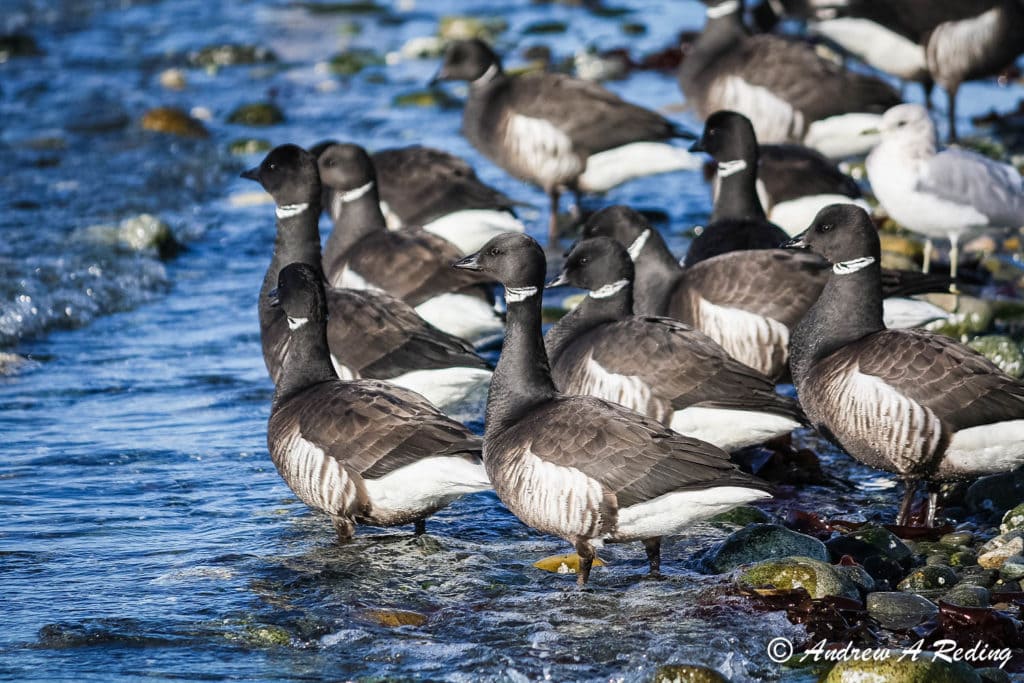
Fifteen of Oregon’s bays and estuaries are recognized as Important Bird Areas, which are focal areas of conservation importance for bird species. These sites support thousands of migratory shorebird, waterbird, and waterfowl species including species of concern like the Red Knot, Dunlin, and Black-bellied Plover. As a case in point, the Columbia River Estuary supports more than 20,000 migratory shorebirds of 15 different species every year as a vital staging area. The Yaquina Bay Estuary supports a variety of birds including significant numbers of Pacific Black Brant, which are highly dependent on eelgrass beds as a food source.
For over a year, Bird Alliance of Oregon has been engaged in efforts to update Oregon’s estuary management plans, which were written in the early 1980s. These original plans, though forward-thinking at the time, emphasized development while minimizing ecological concerns, didn’t address climate change issues, and were written before species like Coho salmon were even listed as endangered. They also didn’t embrace habitat restoration as a tool or involve coastal Tribes to address legacy impacts to the estuary, including disturbance of cultural resources.
The Yaquina estuary management plan update process kicked off over a year ago. This process will serve as a template for other estuary management plan updates across Oregon and so will likely set the tone for decision-making moving forward. Bird Alliance of Oregon Tenmile Creek Sanctuary Manager Paul Engelmeyer was invited to be part of the Advisory and Technical Committees formed to help advise the development of the Yaquina plan update.
This past June, the Willamette Partnership (consultant working with relevant agencies and county governments) released the draft plan for public comment. The draft plan is a good start and includes important updates, including the incorporation of climate change vulnerability considerations, a list of restoration and mitigation sites, and the development of a map viewer tool to help guide management decisions. However, we see a lot of work ahead for this plan to be sufficiently effective and robust. In our July public comment letter we provided detailed recommendations to improve the plan, including these key requests:
-
- Increased opportunities for public comment: To date it has been limited and without a full range of natural resource information for the public to make informed decisions to improve the plan. For example, currently there is no bird distribution information incorporated into the map viewer tool despite the fact that we know ODFW and USFWS have recent avian data sets that could help inform the plan.
- We are pleased to see that the plan incorporates climate vulnerabilities, and the map viewer tool includes sea level rise and corresponding landward migration map scenarios. However, the plan does not integrate these scenarios into the plan and effectively ignores how upland coastal shorelands will be impacted by these climate challenges. Upland habitats currently bordering the estuary will definitely be impacted by these expected changes and so must be considered in the plan.
- The plan should include a fully fleshed out restoration plan for the entire estuary that includes goals, objectives, prioritized list of sites, and a timeline for implementing restoration activities.
Thanks to those of you who provided public input this summer, and stay tuned for further opportunities to help protect Oregon’s estuaries. Ultimately, we would like to see Oregon update all estuary plans to provide the strongest habitat protections possible to ensure a vibrant economy.



